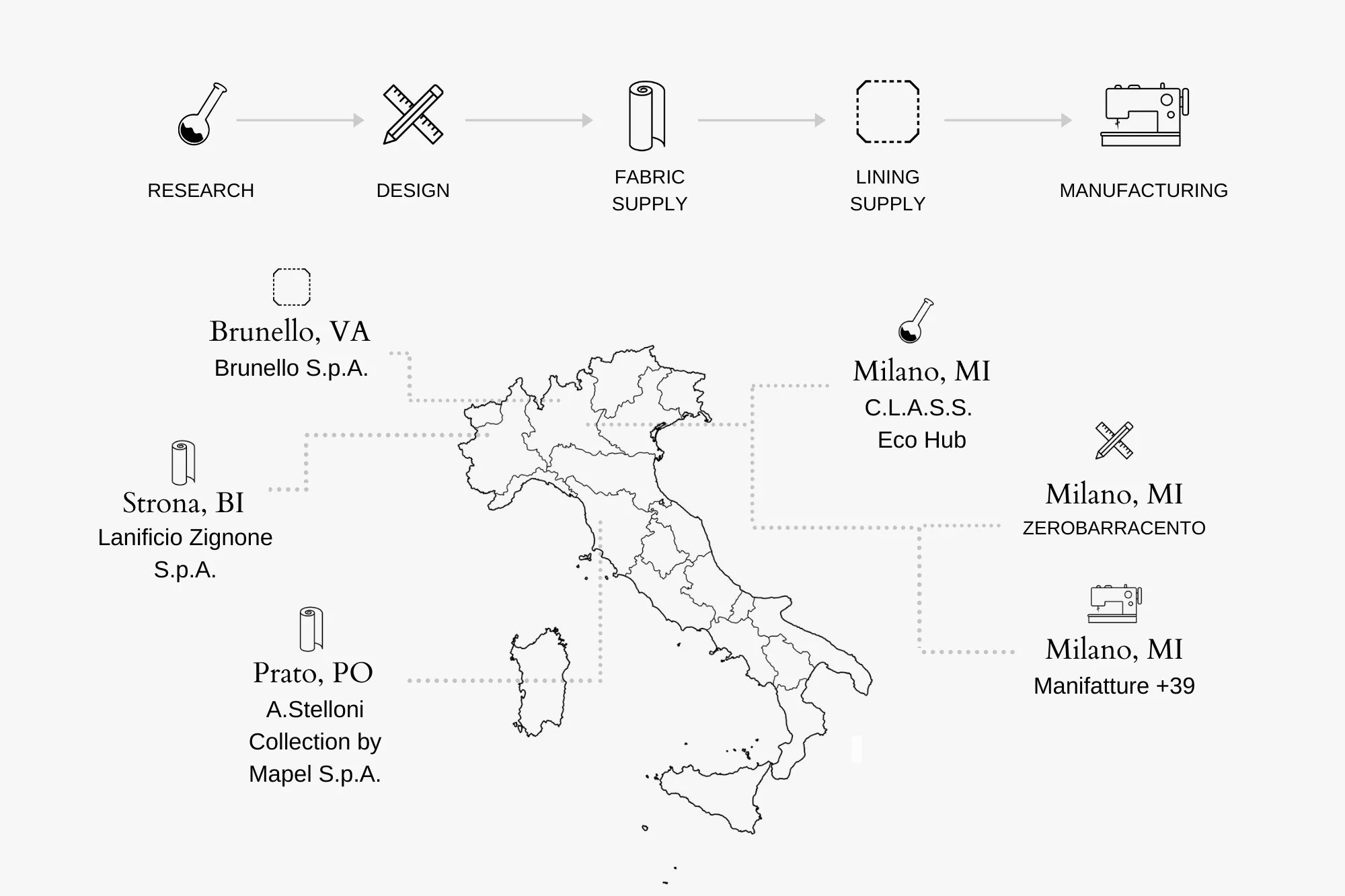Zerobarracento
CASE STUDY
Created by Redress, 2018
Zerobarracento
Zerobarracento is a womenswear brand founded by Milan-based designer, Camilla Carrara, who was a semi-finalist in the Redress Design Award 2015/16 cycle. The brand’s core mission is to highlight traceability and transparency, and their collections frequently feature zero-waste designs.
In this case study, we learn why fibres are important to design decisions and how to take responsibility for their environmental impact.
IN CONVERSATION WITH CAMILLA CARRARA
Why is it important for fashion designers to understand fibres?
Material knowledge is fundamental for fashion designers. One fibre, one specific yarn, or one fabric can totally change the look and functionality of a garment.
What sustainable fibres have you been working with for your collections?
My preference is always to use fibres that are less environmentally impactful, yet have high quality. I started my career in Italy, working with GreenFibre wool, which is made from pre-industrial leftovers.
I have also experimented with Newlife™ recycled polyester yarn, which is made from plastic bottles. This fibre has been assessed by ICEA and is certified by OEKO-TEX® and the Global Recycling Standard (GRS).
Compared to conventional polyester, Newlife™ saves 94% water, 60% energy, and 32% carbon emissions, making it my go-to choice for fibres.
Transparent certification is a significant step forward for sustainable fashion and a growing area for design professionals to take notice.
What are your considerations for environmental protection during fabric sourcing?
Considering the volatile weather happening globally, water is a sensitive topic for me. Imagine if you could choose a cotton that saves up to 78% of water in comparison to conventional cotton!
When sourcing materials for my collections, I refer to the Life Cycle Assessment (LCA) to assess their environmental impact.
For example, I chose to work with ECOTEC®, an Italian cotton produced by Marchi & Fildi, because it is made from offcuts. Its production is highly efficient in minimising CO2 emissions, energy resources, and water consumption.
Image credit: Zerobarracento
Zerobarracento highlights the importance of looking at the lifecycle of fibres. The decision to use cotton offcuts not only reduces the environmental impact during yarn production, but it also avoids virgin resources, and is a monofibre that can be recycled after use.
Are there any new fibres you are excited about using?
Yes — Re.VerSo™ is recovered textile waste handpicked from various brands across a local network of factories. To support Zerobarracento’s local supply chain, this Italian production process creates high-quality wool, baby camel, and cashmere, all certified with GRS (Global Recycled Standard).
What websites, programmes, or events would you recommend for designers who want to find more sustainable fibres?
I would definitely suggest C.L.A.S.S. (Creativity Lifestyle and Sustainable Synergy) platform. It’s a unique multi-platform hub based in Milan, specialising in integrating sustainable practices into fashion brands. Another interesting sourcing platform is the German fabric store Lebenskleidung. They sell organic certified fabrics online which is great for designers locally or worldwide. Lately Zerobarracento has been using archive fabrics from Teseo, a reliable partner for resources aligned with circular fashion values.
In order to prepare for your journey as a design professional, our Redress Design Award Pathway Course is one that Camilla accomplished giving her a competitive edge in today’s industry and creating fashion more sustainably.
Zerobarracento embraces mindful manufacturing, choosing factories with a localised supply chain to reduce the carbon footprint of the logistics. We seek out experts working with sustainable materials. Although there is an environmental impact across every step of a product’s lifecycle from raw material to end-of-life, you have the ability to significantly reduce that impact.
Image credit: Zerobarracento


